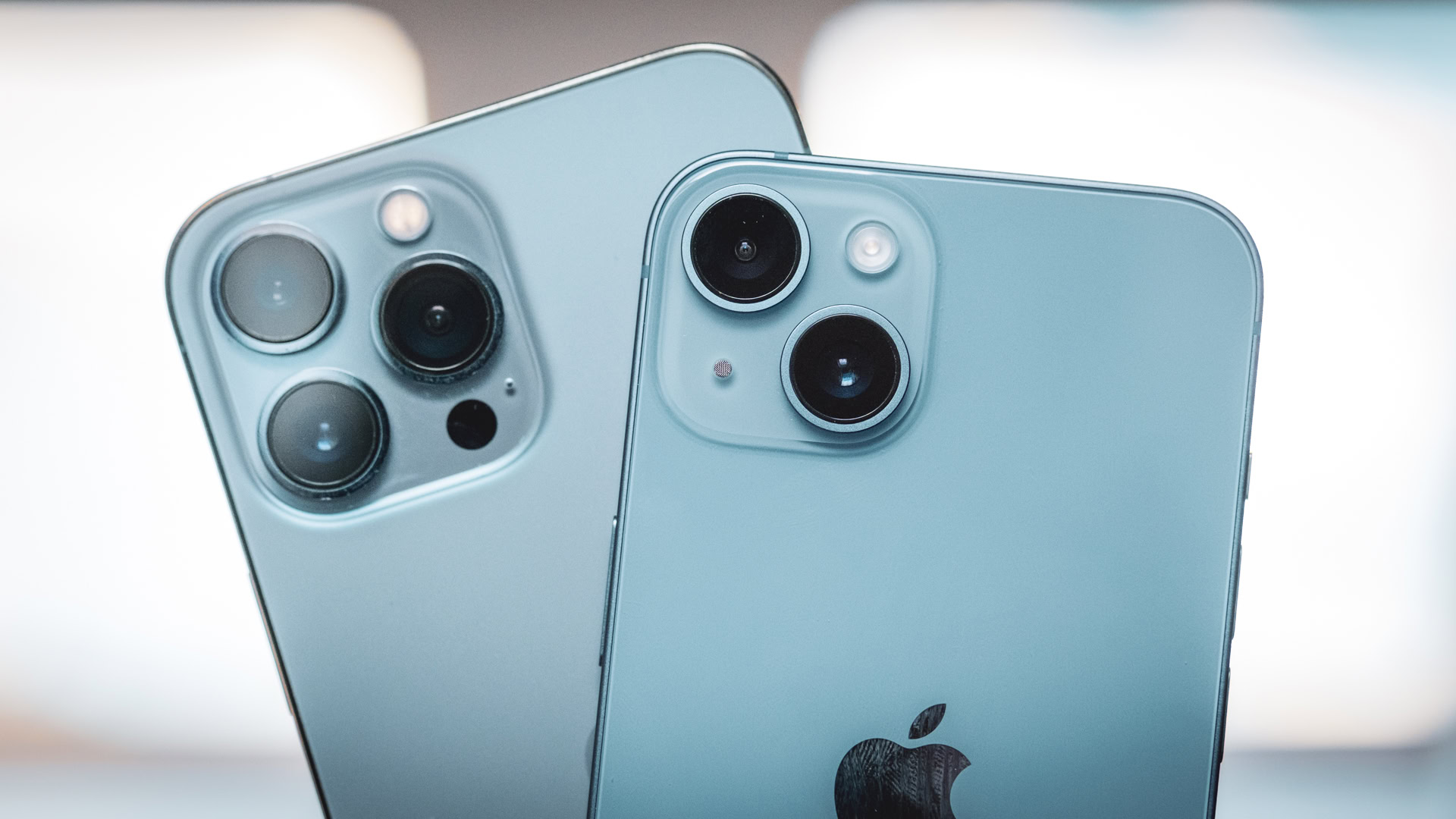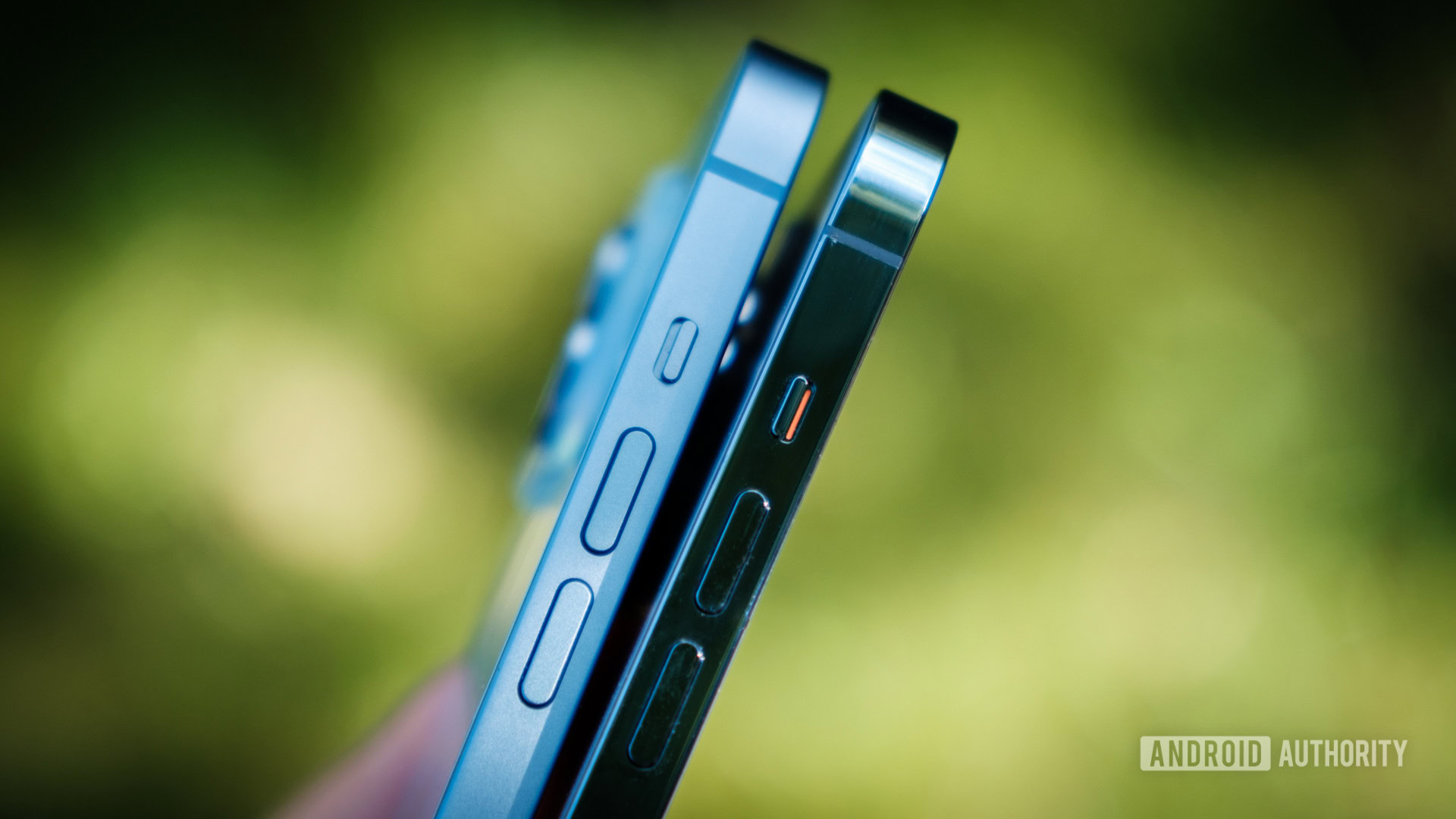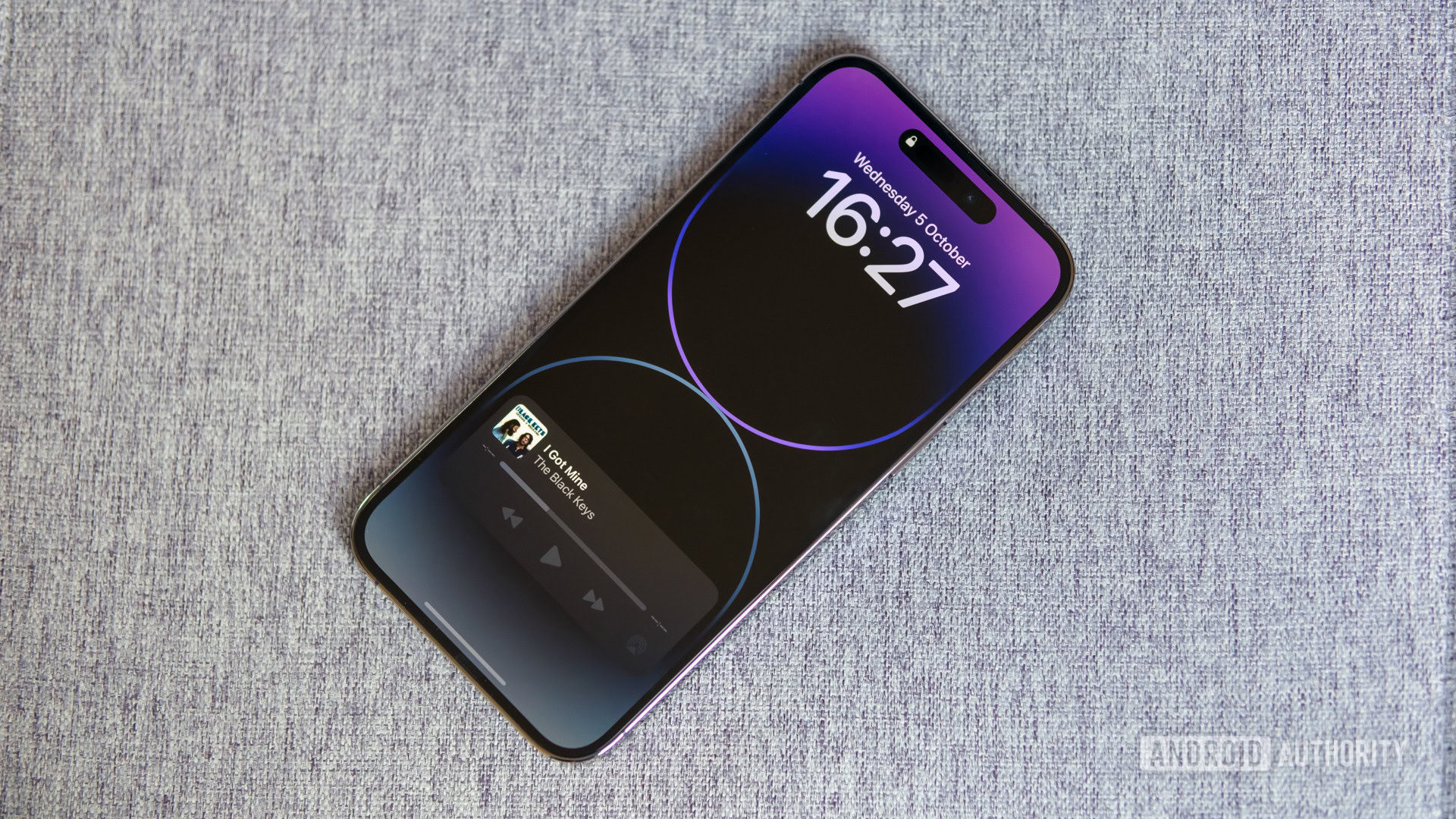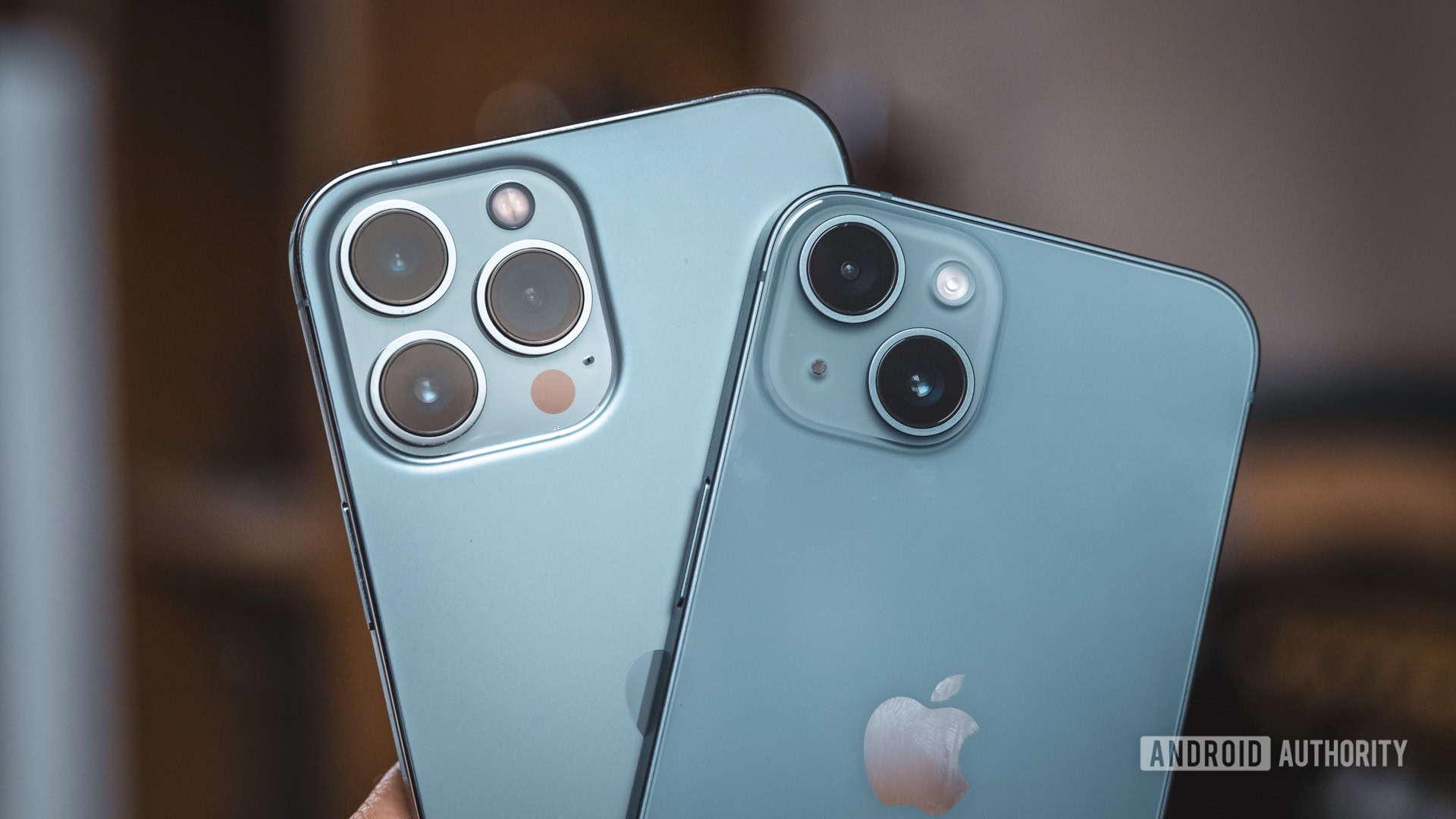Affiliate links on Android Authority may earn us a commission. Learn more.
Here's what you miss out on by not buying the iPhone 15 Pro
September 24, 2023

There’s a $200 price jump between the entry-level iPhone 15 and Apple’s Pro model, which makes picking between the two a tough choice. However, with Apple’s latest and greatest technology increasingly reserved for its Pro and Pro Max models, the chasm between the basic and elite iPhone experience is growing ever wider.
So, is it worth jumping up to the more expensive iPhone bracket? Well, here are the key features you miss out on by not buying the iPhone 15 Pro.
A new design

- There’s different colorways once you cross the Pro barrier
- Apple’s Pro models are built from premium materials
- The new Action button.
First up, the iPhone 15 and iPhone 15 Pro look different. The former comes in colorful colorways; pink, green, blue, and yellow, with a standard black option if you’re after a subdued look. Meanwhile, the Pro comes in Black Titanium, White Titanium, Blue Titanium, and Natural Titanium. As the name suggests, the iPhone 15 Pro boasts a sturdy titanium alloy for its outer casing rather than aluminum.
There are not just cosmetic differences between Apple’s latest iPhone 15s. Pro model boasts Apple’s new Action switch. The regular model retains Apple’s long-running mute toggle on the side of the phone.
Perhaps this isn’t a huge deal; quickly muting the phone is still convenient, after all and you can’t quickly see if the Pro model is muted just by looking at the switch. However, the new button opens the door to a much more customizable experience on the iPhone 15 Pro and Pro Max. Whether that’s quickly launching your favorite app or more advanced Shortcuts.
Cutting-edge performance
- More powerful A17 Pro processor (3nm).
- Hardware ray tracing for high-end games.
- Faster USB 3.2 speeds over USB-C.
If you have a need for speed, the iPhone 15 Pro offers a step up. As has been the case for the past few years, Apple reserves its latest silicon for its more expensive phones, and the only way to get your hands on the new A17 Pro chip is to grab the iPhone 15 Pro or Pro Max.
The processor claims a 10% CPU boost and a 20% GPU uplift over the A16 model, as well as energy efficiency improvements from being the first mobile processor built on TSMC’s 3nm node. Additionally, the A17 Pro is Apple’s first chip with ray tracing hardware support, something for high-end mobile gamers to consider.
The A17 Pro, complete with ray tracing, is reserved for the iPhone 15 Pro and Pro Max.
The new processor also sports a faster USB controller, which means far quicker data transfers over the phone’s new USB-C port. The iPhone 15 Pro supports data speeds up to 10Gbps (with the correct cable), while the regular model is stuck at a sluggish 480Mbps. It’ll take an age to move 4K HDR videos on and off the regular iPhone 15 at that pace.
A nicer display

- Smoother 120Hz ProMotion display.
- Always-on display features.
Sticking with the multimedia theme, the iPhone 15 Pro looks nicer across a range of content. Support for 120Hz frame rates means silky-smooth scrolling across the web and judder-free gaming frame rates. Once you’ve sampled high-refresh rates, returning to the iPhone 15’s 60Hz panel feels downright sluggish. Honestly, we don’t know why Apple keeps its budget iPhone locked at 60Hz when faster panels are commonplace across Android, even across more affordable smartphones.
60Hz only makes the iPhone 15 feel like a budget display.
Similarly, Apple’s Always-on Display (AoD) features are reserved for its ProMotion, variable refresh-rate displays. This allows you to see a dimmed, low-power version of your lock screen on the iPhone 15 Pro, keeping the date, time, and alerts visible even when the phone is locked. There’s no such luck if you buy the regular model.
Apple’s best camera features
- Larger primary image sensor with Night portraits
- 3.2x optical zoom lens.
- ProRes and Log video recording.
The regular iPhone 15 camera isn’t a budget option, by any means, but the Pro model comes out on top. For starters, it boasts a newer and larger primary image sensor with 2.4µm pixel sizes compared to the regular model’s 2.0µm. This will help out in those lower light and tricky HDR situations. In addition, the iPhone 15 Pro supports 48MP RAW image capture.
Likewise, while the iPhone 15 relies on Apple’s 2x cropping technology for zoom, the iPhone 15 Pro has a 77mm (3.2x) optical zoom lens for better long-range shooting. Not only that, the 77mm focal length will help you capture better-looking portraits, with more realistic facial shapes and soft natural bokeh blur. Speaking of portraits, only the Pro models support Night mode portrait photography as well as macro modes from the ultrawide sensor.
Regarding video, Apple locks its ProRes recording features behind its Pro models too. That’s Apple’s “visually lossless” video format for post-production that comes in smaller file sizes than your traditional lossless recording formats. However, you’ll still find 4K/60 and slow-motion options across all models for more standard video capture.
iPhone 15 vs iPhone 15 Pro: Is it worth it?

The iPhone 15 Pro packs in a few more minor extras too. It supports Wi-Fi 6E versus the iPhone 15’s regular Wi-Fi 6, is Thread smart home ready, and has a LiDAR scanner on the back too. $200 is not an insignificant amount of money, so, of course, it’s worth weighing up whether you’ll use the Pro’s additional features.
While the extra performance is perhaps not that tangible in most cases, you’ll definitely feel the benefits of the Action button and ProMotion display. On the whole, the iPhone 15 Pro is a more well-rounded flagship phone and a solid alternative to the best Android phones. Especially if you’ll be capturing a lot of photos and videos.
The regular iPhone 15’s weaker display and photography specs are not quite as competitive, making the standard model seem slightly overpriced versus its Android competitors and the Pro. If you have the cash, I’d spring for the Pro model or wait to see what the upcoming Google Pixel 8 or Samsung Galaxy S24 have in store.

Top-tier build quality
USB-C port, finally!
